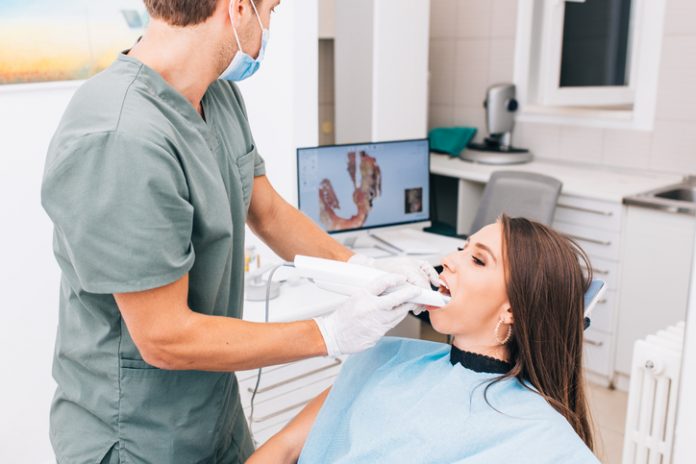Dr Freddie Sloth-Lisbjerg, President of the Council of European Dentists, examines the prevalence and impact of oral health inequalities and service disparities in Europe, exploring barriers to dental care access, the significance of workforce planning, policy recommendations and the transformative potential of digital healthcare in dentistry
The Council of European Dentists (CED) is a European not-for-profit association representing over 340,000 dentists across Europe. The association was established in 1961 and is now composed of 33 national dental associations from 31 European countries. The CED’s mission is to promote the interests of the dental profession in the EU, as well as to promote high standards of oral health.
Oral health is essential to overall wellbeing, yet inequalities in oral health and access to dental services persist across Europe. These disparities have far-reaching consequences, impacting individuals’ physical health, self-esteem, and quality of life.
Across Europe, poor oral health remains a prevalent issue, affecting various age groups and socioeconomic backgrounds. There are different trends in the delivery and financing of oral healthcare in Europe, from the privatisation of dental care to cross-border dentistry and migration, geographical imbalances, and a disproportionate number of dentists.
The prevalence of poor oral health
While specific statistics vary between countries, according to the latest WHO report on oral health, certain factors contribute to these inequalities universally. Socioeconomic status plays a significant role, with individuals from lower-income backgrounds facing higher rates of oral health issues due to limited access to preventive services, unhealthy dietary habits, and reduced awareness of oral health importance.
Beyond dental problems, poor oral health is associated with several serious health risks. Dental caries and periodontal disease have been linked to cardiovascular disease, respiratory infections, and adverse pregnancy outcomes. Additionally, individuals experiencing oral health problems may suffer from chronic pain, difficulties eating, and speech impairments, which can significantly impact mental and emotional wellbeing.
Barriers to dental care services
Various barriers across Europe hinder access to dental services. Some common challenges include:
- Costs:
- High treatment expenses deter many individuals from seeking necessary dental care, especially in countries with limited or no dental insurance coverage. There are high unmet needs for dental care in many countries, and oral diseases rank among the costliest health domains in Europe, just behind diabetes and cardiovascular diseases, according to the Organisation for Economic Co-operation and Development.
- Geographical disparities:
- Dental services tend to be concentrated in urban areas, making it challenging for those living in remote or rural regions to access dental care promptly.
- Education and awareness:
- Limited oral health education contributes to low awareness of preventive measures and the importance of regular dental check-ups, leading to delayed or neglected dental visits.
- Language and cultural barriers:
- Migrants and minority communities may face language and cultural barriers while attempting to access dental services, resulting in decreased utilisation.
The significance of workforce planning
Addressing oral health inequalities necessitates a well-planned and adequately distributed dental workforce. The issue of dental workforce challenges corresponds to the overall trend that Europe has been facing regarding healthcare professionals, with uneven distribution of numbers across and within countries, as detailed in the CED Position on the Dental Workforce.
A proactive approach to workforce planning can bridge the gaps in the number and distribution of dental professionals, particularly in underserved regions. By incentivising dentists to practice in areas with limited access to dental care and expanding dental school capacity, the availability of dental services can be improved for vulnerable populations.
The CED position on the dental workforce focuses on maintaining the dentist as the dental team leader with task delegation and no substitution within the dental team.
Workforce planning must begin at the national level, and all countries should be equipped and prepared to educate and train the right number of dental professionals for their own needs.
National governments should ensure that, as part of their health workforce initiatives and strategies, there are policies supporting appropriate workload, continuing education, and favouring retention of the dental workforce. This should also include policies that can boost the purchasing power of individual practices, allowing for a level playing field with corporate chains.
Policy measures to tackle oral health inequalities
To effectively tackle oral health inequalities and service disparities in Europe, policymakers should consider implementing the following measures:
- Universal oral healthcare: introduce or expand universal oral healthcare programmes to provide essential preventive and treatment services to all citizens, regardless of socioeconomic status or geographical location.
- Health promotion and education: implement widespread oral health education campaigns to raise awareness about the importance of oral hygiene practices and regular dental check-ups.Affordable treatment: establish subsidies, insurance schemes, or sliding-scale payment systems to make dental care more affordable and accessible for disadvantaged populations.
Several successful interventions have showcased the potential to reduce oral health inequalities in Europe. School-based preventive programmes, community outreach initiatives, and mobile dental clinics have demonstrated promising results in enhancing oral health outcomes among underserved populations. These interventions prioritise preventative care, raise awareness, and bring dental services closer to those in need.
The digital transformation of oral healthcare
The digital transformation of oral healthcare presents significant opportunities for dentists and patients across Europe. Advanced technologies such as tele-dentistry, digital imaging, and artificial intelligence-driven diagnostics can improve access to care, enhance treatment outcomes, and streamline dental processes. Digital records and communication systems enable efficient and patient-centred care, ultimately improving the overall dental experience.
Recently, the European Commission presented a proposal for a Regulation to create a European Health Data Space (EHDS) with the aim of connecting national health systems based on interoperable digital exchange formats to enable secure and efficient cross-border transfer of health data.
The CED welcomed the proposal on the EHDS in light of its overall objective of ‘empowering individuals across the EU to fully exercise their rights over their health data’. However, as explained in the CED position on the EHDS, it is important to ensure that the proposal and its future implementation are truly workable and beneficial for healthcare professionals, dentists included.
Multiple relevant aspects need to be considered, such as discrepancies and variations in progress among Member States regarding the use of electronic health records and dental data specifically. Furthermore, implementing and maintaining participation in the EHDS architecture brings numerous burdens to dental practice. These include financial costs for software and hardware and many hours dedicated to training and compliance – a time that dentists and their teams would devote to patient treatment and care.
Addressing oral health inequalities and service disparities is crucial for ensuring the overall wellbeing of individuals across Europe. By understanding the prevalence and impact of poor oral health, identifying key contributing factors, and recognising the barriers to dental service utilisation, policymakers can develop targeted strategies to address this issue effectively. Through workforce planning, policy recommendations, and the implementation of successful interventions, oral health inequalities can be reduced, promoting equitable access to dental services for all Europeans.











